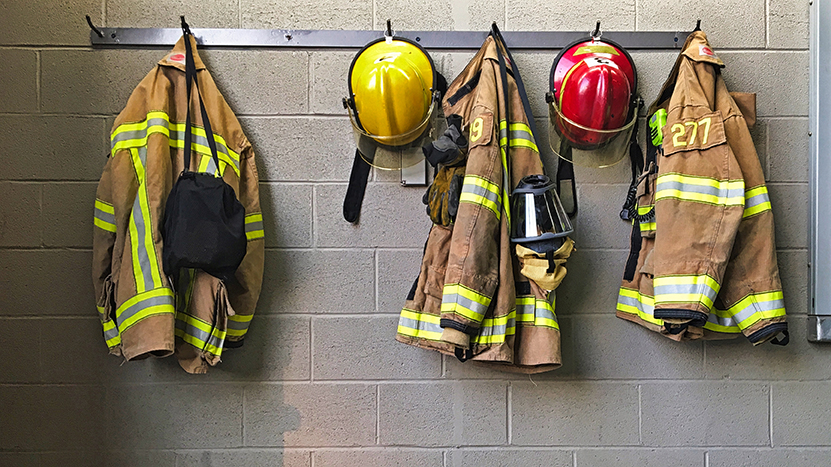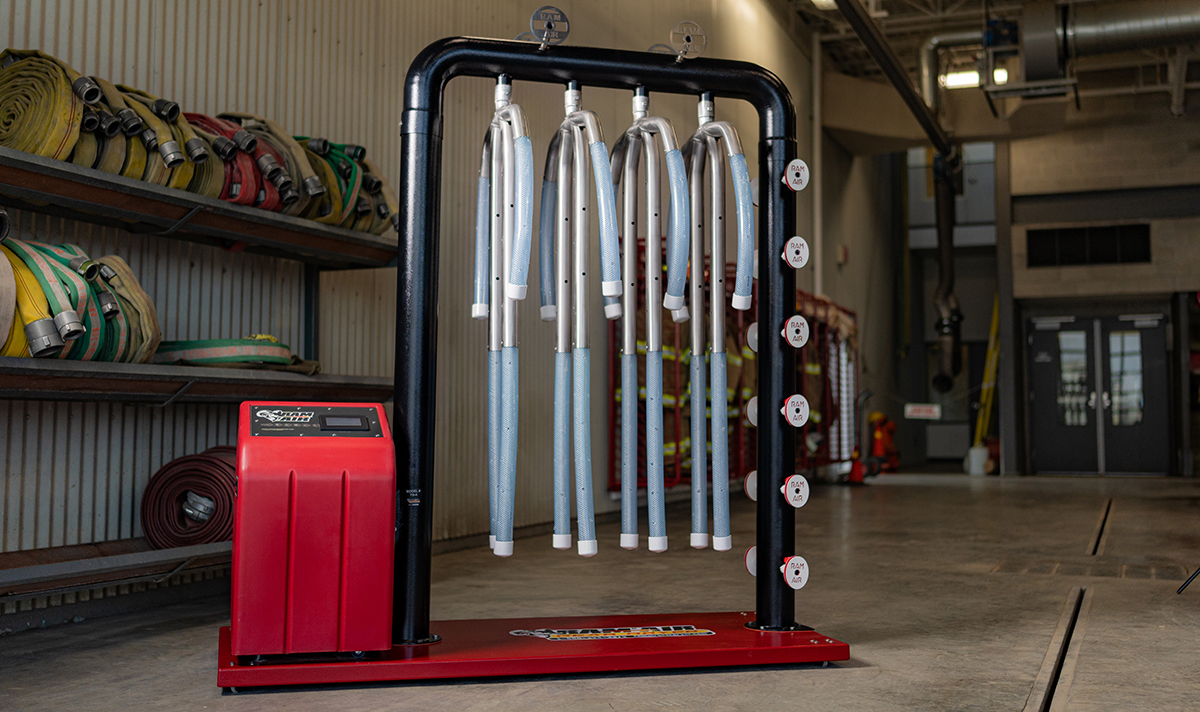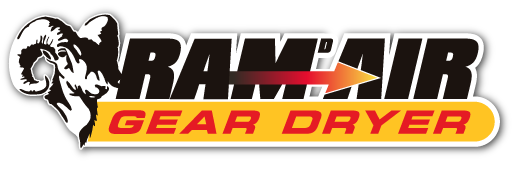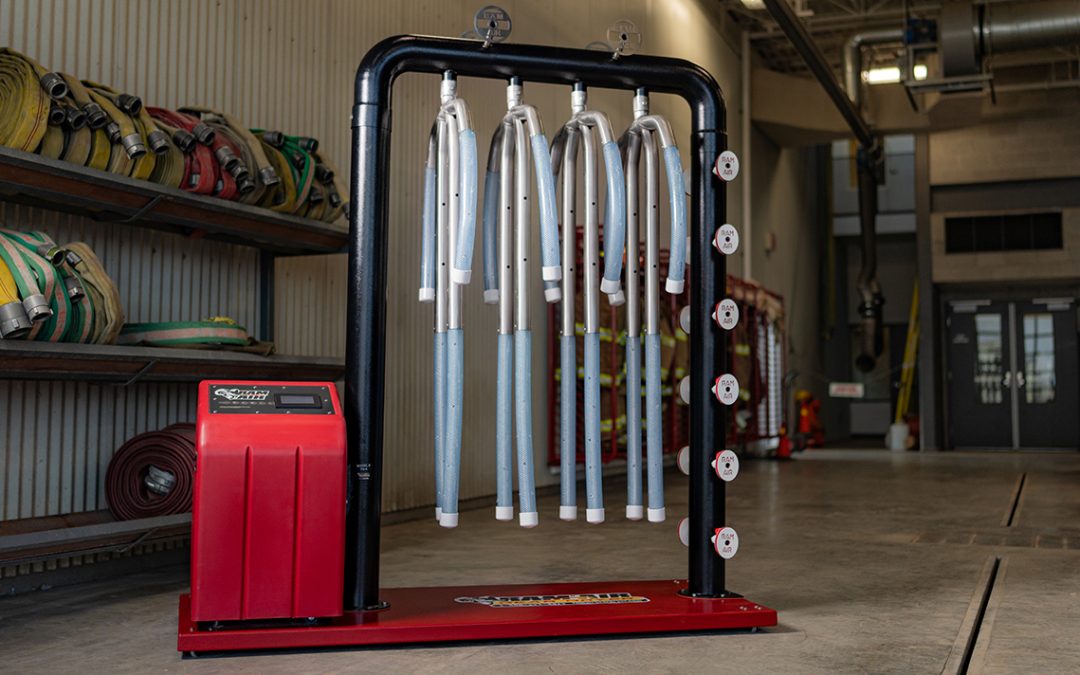Properly drying firefighter turnout gear is essential for preserving its protective qualities and ensuring it’s ready for the next emergency. With various drying methods available, it can be challenging to choose the best one. In this blog, we’ll compare three common methods—air drying, cabinet dryers, and open-air dryers—to help you make the best decision for your department.
Traditional Air Drying

Air drying is the most basic and widely used method, but it’s not always the most practical or efficient. Although it’s cost-effective, this method is slow and may leave moisture behind in the gear, increasing the risk of mold and mildew. The difficulty is drying the hard-to-reach areas. Many departments that hydrostatically test the vapour barrier are finding issues with these hard-to-reach areas. Specifically, the underarm and crotch areas tend to be harder to reach and therefore dry, making them one of the main reasons we see failing the hydrostatic testing.
Pros
- Cost-effective: No additional equipment is needed.
- No risk of overheating: Since no heat is applied, there’s no risk of damaging heat-sensitive materials in the gear.
Cons
- Time-consuming: Air drying can take an extended amount of time, which may not be ideal for departments with a high volume of calls.
- Inconsistent drying: Without proper airflow, parts of the gear may stay damp, increasing the likelihood of mildew buildup.
- Risk of sun damage: Drying bunker gear in direct sunlight increases the risk of UV damage, which can degrade the fabric and reduce the lifespan of the gear.
- Reluctance to clean gear: The difficulty and logistics of air drying may discourage staff from cleaning their gear regularly, leading to the continued use of garments that could have a hydrocarbon load and be contaminated with harmful fire gases.
SUMMARY
Air drying is a budget-friendly option but should only be considered if more efficient equipment dryer solutions are unavailable. It’s especially problematic in humid climates, cold environments or during busy periods.
Cabinet Dryer Style
A cabinet dryer is an enclosed system originally designed for drying firefighter hose. They have since been modified to dry turnout gear. Some cabinet dryers were not specifically designed for this purpose when they first entered the market, therefore they may not offer the most optimal drying experience for protective gear. Some of these dryers circulate warm air around the gear but struggle to dry evenly while targeting the hard-to-reach areas. There are some important factors to consider.
Pros
- Even, thorough drying: The cabinet dryer may allow warm air or ambient air to circulate around the gear.
- Faster drying time: A cabinet dryer will significantly reduce drying time compared to air drying, getting gear back into service faster than air drying.
- Compact storage: The cabinet dryer system allows multiple pieces of gear to dry at once, saving space compared to hanging gear around the station.
Cons
- External ventilation requirement: some cabinet dryer systems may require modifications to your firehouse, such as external ventilation systems, which will likely involve construction work and additional costs to install.
- Not mobile: Cabinet dryer systems are usually stationary and are not on casters, making them difficult to move around the station.
- Additional accessories needed: Some cabinet dryers require separate accessory dryers to effectively dry all components used by fire departments, such as gloves, boots, and other parts of structural PPE. This adds to the overall cost beyond the initial purchase of the cabinet dryer.
- Original design for hose drying: These units were initially built for drying hoses and later adapted for turnout gear, which may not offer the best gear-specific drying experience.
SUMMARY
Cabinet dryers are a good option for departments that need faster drying times than open air drying. However, the advisability of external ventilation and the lack of mobility may be drawbacks for some stations. Education about pricing and comparing features favors the educated customer when selecting equipment dryers.
Open Air Turnout Gear Dryers

Open air dryers provide an efficient and versatile drying solution for firefighter turnout gear. These systems use powerful airflow to dry gear from the inside out, reaching areas that can be difficult to dry with other methods. With mobility, ease of installation, and no need for external ventilation, open air dryers like the Ram Air Gear Dryer are designed to handle a range of PPE drying needs while preserving the integrity of the gear.
Pros
- Fast, safe drying: Open air turnout gear dryers, like Ram Air Gear Dryers, use powerful fans to push air from the inside out, drying hard-to-reach areas and vapor barriers. The design limits air loss, ensuring efficient airflow and faster equipment drying without damaging the fabric.
- No external ventilation required: Unlike most cabinet dryer systems, no modifications or external ventilation are needed for installation.
- Highly mobile: Some models including Ram Air Gear Dryers are equipped with casters, these dryers easily move around the station and fit through standard doorways.
- Drying versatility: Some manufacturers offer inverted drying for hazmat, immersion, and ice-rescue suits, as well as standard bunker gear accessories. The Ram Air IHT series dries without turning garments inside out, reducing wear and tear on seams.
- Decontamination system: Open air dryers can pair with decontamination systems like the Ram Air PPE Decontamination Sprayer for cleaning and disinfecting gear at the station or fire scene, reducing carcinogens and other contaminants.
- Multiple settings: Models that have adjustable controls allow departments to dry various gear types with tailored settings, including touch-screen options for toggling between ambient and heated air drying, as well as custom equipment dryer time presets.
Cons
- Additional equipment required: While open air dryers require no external ventilation, they are still an added piece of equipment that must be integrated into the station.
SUMMARY
Open air dryers provide a practical solution for fire stations, offering a combination of speed, mobility, and ease of installation. With no need for external modifications and flexible bunker gear drying options for various gear types, these dryers are well-suited for stations with limited space or those requiring portable dryer equipment.
Conclusion: Choosing the Right Turnout Gear Dryer for Your Station
Each method for drying turnout gear has its advantages and challenges:
- Air drying is cost-effective but is slow and inconsistent.
- Cabinet dryers provide fast, more thorough drying but often require external ventilation, installation costs, and lack mobility.
- Open air dryers, like the Ram Air Gear Dryers, offer fast, safe drying with the added benefits of mobility and no need for external modifications.
When evaluating your station’s needs, open air dryers balance convenience, safety, and flexibility, making them a practical choice for many departments. Additionally, it’s important to stay informed on NFPA 1851 standards. Always adhere to your manufacturer’s guidelines for proper care and maintenance when washing and drying with your PPE gear dryer.
Disclaimer: The content of this article is for informational purposes only and reflects the author’s opinions. While efforts have been made to ensure accuracy, no guarantees are provided regarding the completeness or reliability of the information. Readers are encouraged to conduct their own research before making purchasing decisions. The author and the website are not liable for any claims or damages resulting from the use of this information.





